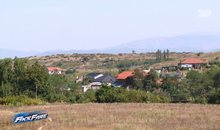
 Flash News
Flash News

About 14 tropical storms develop each year over the Atlantic Ocean, Caribbean Sea and Gulf of Mexico, according to the United States Weather Service.
Of these storms, seven will become hurricanes, writes the BBC .
Not all of these will reach land - most will remain over the ocean.
But some, like Hurricane Milton, which is expected to hit the Florida coast Wednesday evening, end up making landfall, with major life-threatening impacts.
A storm needs tropical conditions to develop into a hurricane - specifically, warm waters of at least 27 C (80 F). It then intensifies and begins to rotate due to a phenomenon known as the Coriolis force, a product of our planet's rotation.
The speed at which these storms spin determines what category the hurricane will be - and how much impact it can cause.
Dr Carmen Solana, an expert in natural disasters at the University of Portsmouth, says wind speed is "very important" in terms of devastation.
Strong winds often cause the most damage to buildings and structures, and they can pick up debris that creates further impacts.
Structures that can withstand high winds and are hurricane-resistant can make a big difference in the overall impact of a storm, so countries with codes and regulations in place tend to see less of this type of destruction than those who do not do this.
Strong winds and debris can affect key infrastructure, as well as cut off areas from emergency services and other important resources.
Rising water levels and heavy rainfall, leading to floods and landslides, and storms can also affect local infrastructure.
"The way cities are designed, built and developed massively affects the city's ability to drain water," says Dr Helen Hooker, a meteorologist at the University of Reading.
Larger urban areas can experience flash flooding, while mountainous regions often suffer other damaging effects such as landslides.
These strong currents can also carry heavy pieces of debris, leading to further damage.
"A mattress or a desk that moves around is like having a stone that moves with water," says Dr Hooker.
Some cities, known as sponge cities, are built with a focus on green spaces that can absorb water and reduce the impact of heavy rainfall.
Although hurricanes are known for their wind speed, the vast majority of deaths are caused by water hazards such as storm surges, floods, and mudslides, which account for nearly 90% of those killed in hurricanes.
Especially in coastal areas, such as Florida, storm surges can be one of the deadliest consequences of a hurricane.
The US National Hurricane Center is warning that Hurricane Milton could bring a record storm surge of 10-15ft (3-4.5m), as well as localized rainfall of up to 1.5ft.
This comes just two weeks after Hurricane Helene brought historic flooding and a storm surge of more than 50 feet (15 meters) as it passed through the southeastern US.
While the US has experienced a number of powerful storms in the past, it is able to recover from these disasters much more efficiently than poorer countries.
This comes from a number of factors, including geographic location, housing and infrastructure, and the financial and physical resources available for reconstruction.
Preparation can also make a significant difference in the impact of these storms and how quickly communities are able to rebuild afterward.
Latest news


Not only the body, swimming also helps the brain
2025-07-05 21:02:49
"Be careful with the water", Alimehmeti warns about the health risks of summer
2025-07-05 20:39:10
PSG beats Bayern Munich 2-0, advances to Club World Cup semifinals
2025-07-05 20:19:38

Two vehicles collide on the Elbasan-Peqin axis, drivers injured
2025-07-05 19:26:29

What does Zelenskyy have more than Zegjineja?
2025-07-05 18:45:26

Fiscal peace, but at a cost
2025-07-05 18:00:10
'Bankers' tax evasion, Chinese CEO and former director jailed
2025-07-05 17:39:21
Kyle Walker joins English club on two-year deal
2025-07-05 17:20:24
Two cars collide on the Saranda-Delvina axis, 4 injured
2025-07-05 17:05:29
Touching gesture! Liverpool will pay Jota's family's salary until 2027
2025-07-05 16:45:18
The zodiac signs that cheat most often
2025-07-05 16:25:53

"I asked for the dismissals", Dredha tries to soften Rama's 'blow' in Vlora
2025-07-05 15:48:49
Bomb threat in Parliament, prosecutor: It was a lie
2025-07-05 15:22:28

Bardhi: The recount revealed how greedy Zeqine Balluku is in stealing
2025-07-05 14:44:29
Knife wound on the secondary road Tirana-Durrës, perpetrator sought
2025-07-05 14:37:54
Tears and pain, Diogo Jota is escorted to his final home
2025-07-05 14:21:34
Success starts with yourself! Simple ways to invest in personal development
2025-07-05 13:58:50
Unlicensed firearms found in apartment, 50-year-old arrested in Lushnje
2025-07-05 13:43:11

Tirana Court remands Skerdi Sina to prison
2025-07-05 12:59:34
Cocaine laboratory in Greece, here are the Albanians arrested and wanted
2025-07-05 12:40:16
Directed Justice/Vangjeli: SPAK does not investigate any scandal involving Rama
2025-07-05 12:22:03

Bomb alert, Police remove MPs and media from Kosovo Parliament building
2025-07-05 11:48:16
"The will of the people" and the irony of ordered resignations
2025-07-05 11:32:05
Summer drowning risk: How to enjoy the water without risking your life
2025-07-05 11:20:27
Fire situation in the country, 16 fires reported in 24 hours, 4 still active
2025-07-05 11:07:04
Car hits pedestrian at white lines, injured in serious condition in Vlora
2025-07-05 10:59:58
Mosquito-borne diseases are a growing problem in Europe
2025-07-05 10:44:13



One of Sweden's most dangerous and wanted criminals arrested in Turkey
2025-07-05 09:38:29
Foreign exchange/ How much foreign currencies are bought and sold today
2025-07-05 09:18:38

"Don't be influenced by the opinions of others", today's horoscope
2025-07-05 08:40:50

Morning Post/ In 2 lines: What mattered yesterday in Albania
2025-07-05 08:02:07

Trump says he's ready to raise tariffs to 70% on some countries
2025-07-04 22:35:52
Tre shenjat e zodiakut që do ‘pasurohen’ në Korrik
2025-07-04 22:05:09
Gaza War: Hamas Accepts US Proposal for 60-Day Ceasefire
2025-07-04 21:50:10
Autocracy in Albania, Fuga: Governance has gotten out of control
2025-07-04 21:40:51
Meta: Agriculture on credit, the new fraud!
2025-07-04 21:26:39




Vote recount in Durrës ends without changes
2025-07-04 20:12:54
Gas station explodes in Rome, 25 injured (VIDEO)
2025-07-04 20:00:20

These afternoon habits often sabotage weight loss
2025-07-04 19:39:28
Former Arsenal player Thomas Partey accused of rape
2025-07-04 19:24:21
Shepherd disappears without a trace in Delvina
2025-07-04 19:14:31

Bardho gave Zegjine's mandate/Braho: Unfair! It violates the electoral system
2025-07-04 19:01:08


Rapid developments in the Sultanates!
2025-07-04 18:00:06



Italy tightens rules for skateboard traffic
2025-07-04 17:20:18

Unusual for the time, dense fog covers the coast of Vlora
2025-07-04 16:48:01


Accident on the Shkodra-Lezhë axis, one dead and 3 injured
2025-07-04 16:14:19
Albania with fewer requests for asylum and Albanian citizenship in 2024
2025-07-04 16:06:57

Albania last for quality of life, DP: Technical government is the solution!
2025-07-04 15:42:30
Nico Williams says "No" to Barcelona, signs with Athletic Club until 2035
2025-07-04 15:33:35
Fires in the country, four fires are still active, what is the situation?
2025-07-04 15:24:20

Summer brings big changes for these 4 zodiac signs
2025-07-04 15:00:04
Osmani: MPs need to agree to a secret ballot for the Speaker of Parliament
2025-07-04 14:51:09
Serious accident on the Peqin-Elbasan axis, two injured
2025-07-04 14:37:56

GJKKO leaves in force the security measure for the head of the KPP
2025-07-04 13:58:17
Who will replace Ilir Meta and take over the leadership of the PL?
2025-07-04 13:50:36
Berisha: Dismissal of directors in Vlora, another act of 'scapegoats'
2025-07-04 13:41:46




Librazhd/ In a serious psychological state, the young man consumes pesticides
2025-07-04 13:05:07


Weapons trafficked from Kosovo to Albania, two arrested, 8 pistols seized
2025-07-04 12:33:28
Konsumimi i tepërt i çokollatës, ja cilat janë dëmet që shkakton në organizëm
2025-07-04 12:23:35

Fires in the country, 21 fires in the last 24 hours, 4 still active
2025-07-04 12:00:19
WB calls for debt transparency: Albania to publish details of every loan
2025-07-04 11:50:05
